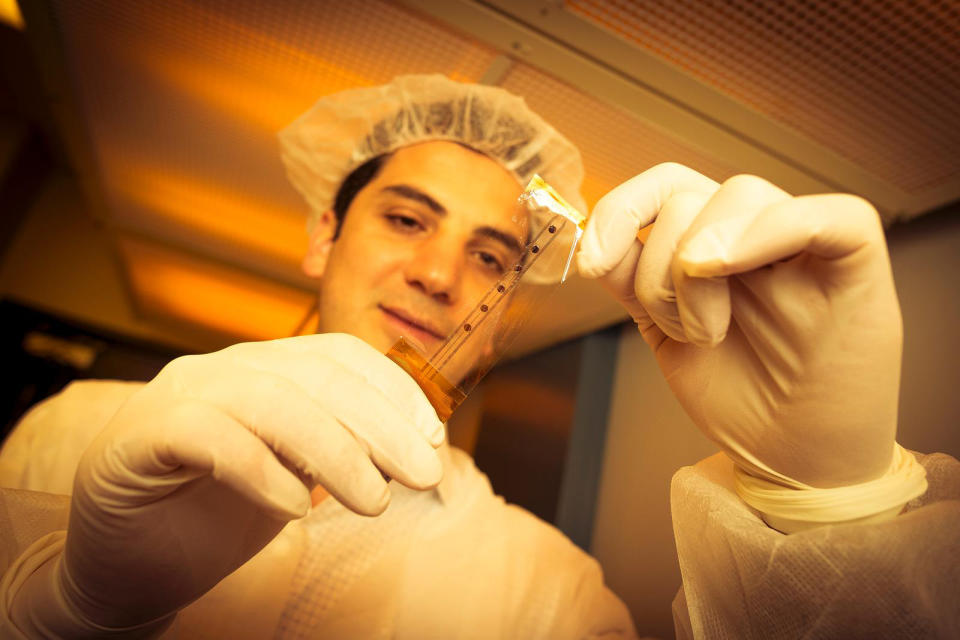Sensor-embedded plastic wrap makes brain surgery safer
Doctors would know exactly where to operate.
It almost goes without saying that brain surgery requires extreme precision, but there hasn't been much advancement in brain mapping techniques for the past two decades. What good is a breakthrough procedure if you're still using bulky, imprecise 1990s-era technology as a guide? Researchers may have a better way: they've developed an electrode grid-based brain mapping tool that's both much easier to wield and far more precise. Instead of relying on the usual metal electrodes, they switched to a conductive polymer that's so tiny and thin it makes Saran Wrap look ungainly. That, in turn, let them stuff 25 times more electrodes into the same space while slimming their tool down to just 0.0002 inches thick instead of a few tenths of an inch.
The result is a brain mapping device that fits much more closely to the brain (giving it better readings) and delivers higher resolution in the process. Real-world tests bear that out. While a regular device and the experimental model could both spot brain areas triggering epileptic seizures, the new device could capture more detail.
There's a lot of work to be done: the scientists want to build higher-density electrode grids and verify that this device can stay in your body for a long time without creating issues. It could be years before surgeons get their hands on a finished product. If and when they do, though, the technology could make brain surgery considerably safer. Doctors would be less likely to damage or remove healthy parts of your brain, and they could cut more aggressively than they might otherwise.


